
Microsoft DirectX is a collection of application programming interfaces (APIs) for handling tasks related to multimedia, especially game programming and video, on Microsoft platforms. Originally, the names of these APIs all began with "Direct", such as Direct3D, DirectDraw, DirectMusic, DirectPlay, DirectSound, and so forth. The name DirectX was coined as a shorthand term for all of these APIs and soon became the name of the collection. When Microsoft later set out to develop a gaming console, the X was used as the basis of the name Xbox to indicate that the console was based on DirectX technology. The X initial has been carried forward in the naming of APIs designed for the Xbox such as XInput and the Cross-platform Audio Creation Tool (XACT), while the DirectX pattern has been continued for Windows APIs such as Direct2D and DirectWrite.

A platformer is a sub-genre of action video games in which the core objective is to move the player character between points in an environment. Platform games are characterized by levels with uneven terrain and suspended platforms of varying height that require jumping and climbing to traverse. Other acrobatic maneuvers may factor into the gameplay, such as swinging from vines or grappling hooks, jumping off walls, gliding through the air, or bouncing from springboards or trampolines.

Banjo-Kazooie is a 1998 platform game developed by Rare and published by Nintendo for the Nintendo 64. Controlling the player characters, the bear Banjo and the bird Kazooie, the player attempts to save Banjo's kidnapped sister Tooty from the witch Gruntilda. The player explores nine nonlinear worlds to gather items and progress. Using Banjo and Kazooie's traversal and combat abilities, they complete challenges such as solving puzzles, jumping over obstacles, and defeating bosses.
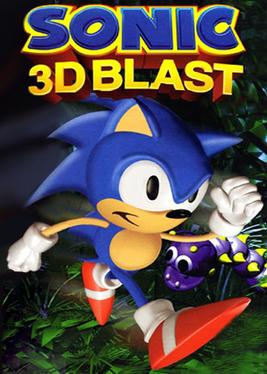
Sonic 3D Blast, known in Europe and Japan as Sonic 3D: Flickies' Island, is a 1996 platform game in the Sonic the Hedgehog series for the Sega Genesis and Sega Saturn. As Sonic the Hedgehog, the player embarks on a journey to save the Flickies, birds enslaved by Doctor Robotnik. The player must guide Sonic through a series of themed levels to collect Flickies and defeat Robotnik. Though it retains game mechanics from prior Sonic games, Sonic 3D Blast is differentiated by its 2D isometric perspective, with pre-rendered 3D models converted into sprites.

Microsoft XNA is a freeware set of tools with a managed runtime environment that Microsoft developed to facilitate video game development. XNA is based on .NET Framework, with versions that run on Windows and Xbox 360. XNA Game Studio can help develop XNA games. The XNA toolset was announced on March 24, 2004, at the Game Developers Conference in San Jose, California. A first Community Technology Preview of XNA Build was released on March 14, 2006.

Vexx is a platform game developed by Acclaim Studios Austin and published by Acclaim Entertainment for the GameCube, PlayStation 2 and Xbox. The game was released in North America on February 11, 2003, and in Europe on April 4, 2003. It follows the main character, Vexx, as he searches different worlds for the wraithhearts to power the rift between worlds and defeat Dark Yabu to avenge his grandfather's death. The game began development in 1999 and underwent a strained development process, during which many features and levels were cut. Vexx received mixed reviews.
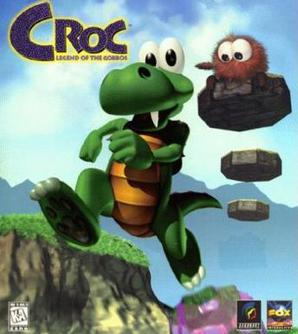
Croc: Legend of the Gobbos is a platform game developed by Argonaut Software, published by Fox Interactive and distributed by 20th Century Fox Home Entertainment in North America and Electronic Arts internationally for Microsoft Windows, PlayStation and Sega Saturn. Taking place in the fictional setting of the Gobbo Valley, Croc: Legend of the Gobbos follows a young crocodile named Croc, who sets out to rescue a group of furry creatures known as Gobbos from the evil magician Baron Dante.

Gex: Enter the Gecko is a platform game and the second installment of the Gex video game series, released in 1998 and 1999 for the PlayStation, Nintendo 64, Microsoft Windows, and Game Boy Color. Its protagonist, Gex, a TV-binging, wisecracking gecko, is voiced by Dana Gould in the North American version, Leslie Phillips in the European release, and Mitsuo Senda in the Japanese release. Gex seeks to collect three types of remotes to unlock different TVs in the overworld that aid in the fight against his arch-nemesis, Rez.

Garfield: A Tail of Two Kitties, known as Garfield 2 in Europe, is a pair of video games, one for the Nintendo DS, and the other for PlayStation 2 and Microsoft Windows, all released on October 17, 2006. They are based on the film Garfield: A Tail of Two Kitties.

Kinect is a line of motion sensing input devices produced by Microsoft and first released in 2010. The devices generally contain RGB cameras, and infrared projectors and detectors that map depth through either structured light or time of flight calculations, which can in turn be used to perform real-time gesture recognition and body skeletal detection, among other capabilities. They also contain microphones that can be used for speech recognition and voice control.
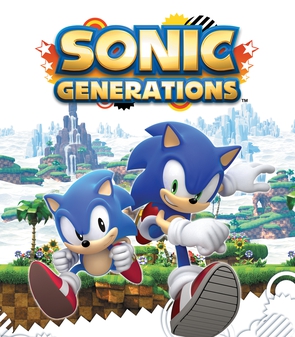
Sonic Generations is a 2011 platform game developed by Sonic Team and published by Sega for the PlayStation 3, Xbox 360, Windows, and Nintendo 3DS. Produced in commemoration of the 20th anniversary of the Sonic the Hedgehog series, the game follows Sonic and his sidekick Tails as they form an alliance with their modern selves. It features two gameplay styles: "Classic", which plays from a side-scrolling perspective like that of the original Sega Genesis Sonic games, and "Modern", 3D levels similar to those in Sonic Unleashed (2008) and Sonic Colors (2010).

Mutant Mudds is a platform video game developed by Renegade Kid. Players control Max and Granny as they combat the titular invaders following a meteorite crash. The game was first released as a Nintendo 3DS eShop exclusive in 2012, and arrived on Microsoft Windows and iOS in 2012. An enhanced version of the game, titled Mutant Mudds Deluxe, was released in 2013 for Wii U and Microsoft Windows, and in 2016 for PlayStation Vita and PlayStation 4. The Nintendo 3DS version was updated as the enhanced version in 2014.
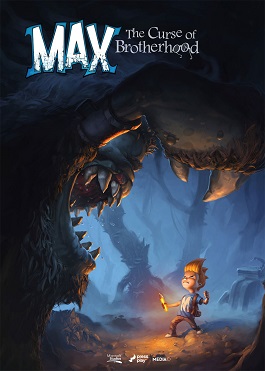
Max: The Curse of Brotherhood is a puzzle-platform video game developed by Press Play for Xbox One, Microsoft Windows, Xbox 360, Nintendo Switch and later on PlayStation 4. The game was announced during Microsoft's E3 2013 press event. It is a sequel to Press Play's previous work, the 2010 game Max & the Magic Marker.
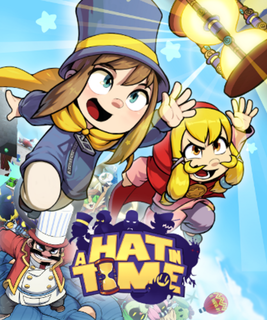
A Hat in Time is a platform game developed by Danish game studio Gears for Breakfast and published by Humble Bundle. The game was developed using Unreal Engine 3 and funded through a Kickstarter campaign, which nearly doubled its fundraising goals within its first two days. The game was self-published for macOS and Windows in October 2017, and by Humble Bundle for the PlayStation 4 and Xbox One consoles two months later. A version for the Nintendo Switch was released in October 2019.

Alien Spidy is a platform game for Microsoft Windows, Macintosh, Xbox 360, and PlayStation 3. It was developed by Spanish studio Enigma Software Productions and published by Kalypso Media. Players control an extraterrestrial spider who has crash-landed on Earth, as he seeks to repair his spacecraft and rescue a fellow extraterrestrial spider.
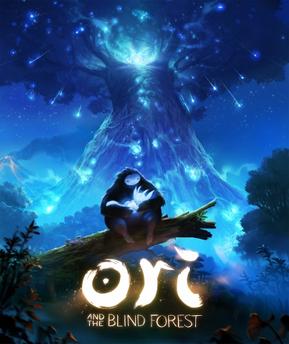
Ori and the Blind Forest is a platform-adventure Metroidvania video game developed by Moon Studios and published by Microsoft Studios. The game was released for Windows and Xbox One in March 2015, and for Nintendo Switch in September 2019. Players assume control of Ori, a small white spirit, and Sein, the "light and eyes" of the Forest's Spirit Tree. Players are tasked to move between platforms and solve puzzles. The game features a save system called "Soul Links", which allows players to save their progress at will with limited resources, and an upgrade system that allows players to strengthen Ori's skills and abilities.

The Cat in the Hat is a 2003 2.5D platform game for PlayStation 2, Xbox, Microsoft Windows and Game Boy Advance. The PlayStation 2 and Xbox versions were developed by Magenta Software. The Windows and Game Boy Advance versions were developed by Digital Eclipse. All versions of the game were published by Vivendi Universal Games. It is based on the 2003 film of the same name, which was released shortly after the game. A version for the GameCube was planned, but was never released. The Windows version is compatible with Windows 98, Windows ME, Windows 2000, Windows XP, Windows Vista, and Windows 7. It is not compatible with Windows 95 or earlier versions of Windows or Windows 8 and later versions of Windows.

New Super Lucky's Tale is a 3D platform game developed and published by Playful Studios. It is an enhanced remake of 2017's Super Lucky's Tale, also developed by Playful Studios and published by Microsoft Studios. Initially released for Nintendo Switch in November 2019, it was later released for PlayStation 4, Windows, and Xbox One, in August 2020. The game received generally positive reviews, with critics praising its improvements over the original.

Poi is an independent 3D platform game released on Linux, macOS and Microsoft Windows via Steam, Nintendo Switch, PlayStation 4 and Xbox One. Poi was the first game developed by PolyKid, an independent studio made up of graduates from the DigiPen Institute of Technology. Following an unsuccessful Kickstarter campaign in August 2015, the game was released via Steam Early Access the following November and remained in active development until a finished version was released in February 2017, followed by home console ports later that year.



















